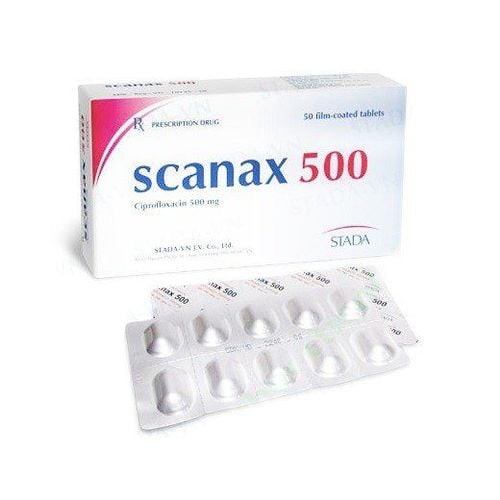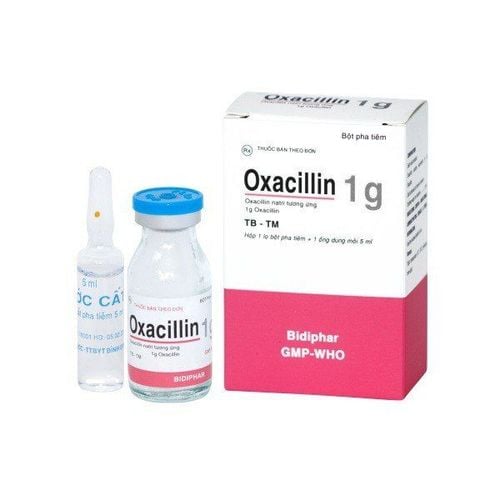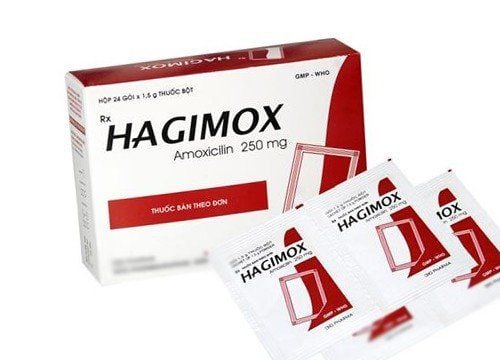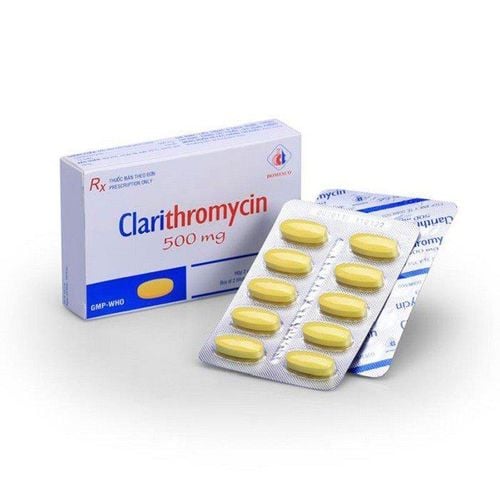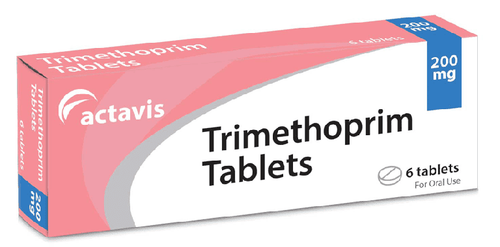This is an automatically translated article.
What is Pefloxacin? The drug has the main ingredient containing the active ingredient Pefloxacin with a concentration of 400mg and excipients just enough for 1 tablet. The drug belongs to the group of anti-parasitic, anti-bacterial, anti-viral, anti-fungal drugs. Let's learn more about the use of Pefloxacin through the article below.
1. Effects of Pefloxacin
Pefloxacin is indicated for use in the following cases:
Pefloxacin is only used in adults. Indications for the treatment of Pefloxacin drug for acute and chronic prostatitis even in severe form, used in the serial treatment of bacterial infections of the joints. Treatment of infections of the lower respiratory tract, soft tissue and skin, gastrointestinal tract, infections in surgery, urinary tract, sepsis and in gynecology. When there is no combination with the antibiotic Fluoroquinolone, Pefloxacin is indicated for single use in the following cases: acute uncomplicated cystitis in premenopausal women, urethritis. Because pneumococci and streptococci are resistant to pefloxacin, pefloxacin should not be used as a first-line drug when an infection with these bacteria is suspected. It is necessary to combine with another antibiotic in the treatment of infections caused by Staphylococcus aureus and Pseudomonas aeruginosa that already have resistant strains. Pefloxacin is not indicated in the following subjects:
Do not use Pefloxacin for pregnant women, lactating mothers, children and adolescents (until the end of the growth period because can cause severe arthropathy, especially in large-joint fish because of its joint toxicity). Contraindicated in patients with a history of hypersensitivity to Pefloxacin, Quinolone or any of the excipients in Pefloxacin. The patient is deficient in the enzyme Glucose-6 Phosphate Dehydrogenase (G6PD). The patient has a history of tendon injury caused by fluoroquinolones.
2. Usage and dosage of Pefloxacin
2.1. How to use Pefloxacin medicine Pefloxacin is used orally. It is best to take it in the middle of a meal or right after a full meal to avoid causing gastrointestinal upset.
2.2. Dosage of Pefloxacin In people with normal liver and kidney function: Take 2 tablets a day (equivalent to 800mg), divided into 2 times, take 1 tablet in the morning and 1 tablet in the evening. In the first time to quickly achieve an effective blood concentration of the drug, a loading dose of 800mg (equivalent to 2 Pefloxacin tablets) can be used. Patients with impaired liver function: Need to adjust dose by increasing the interval. Interval between 2 doses in people with reduced blood flow to the liver or liver failure: If there is no jaundice, ascites use twice a day If jaundice is present, use once a day If ascites is present, every 36 hours If have both jaundice and ascites used every 48 hours. In patients older than 65 years: Use a dose of 1 tablet / day (equivalent to 400mg), divided into 2 times / day, taking half a tablet of Pefloxacin once a day.
3. Undesirable effects of Pefloxacin
During the use of Pefloxacin, in addition to the therapeutic effects, the patient may experience the following undesirable effects:
Common side effects such as: Nausea, vomiting, stomach pain, insomnia, muscle pain, arthralgia, rash, urticaria. Less common side effects include: eosinophilia, headache, dizziness, diarrhea, photosensitivity. Rare side effects such as: malaise, hallucinations, thrombocytopenia, enteritis (pseudomembranous colitis), increased bilirubin, increased alkaline phosphatase and transaminase, subcutaneous erythema, pruritus. Very rare side effects: acute renal failure. Side effects of unspecified frequency: Decreased blood cell counts, anaphylaxis, allergic reactions, red spotty subcutaneous hemorrhage, myoclonic jerks, convulsions, headache, confusion, increased blood pressure Intracranial force, disorientation, hallucinations, paresthesias, myasthenia gravis, insomnia, excitability, tendinitis, joint effusion, tendon rupture, Lyell syndrome, Stevens-Johnson syndrome. It is recommended that patients, when experiencing any adverse effects during the use of Pefloxacin, should stop using the drug immediately, notify the doctor to conduct treatment of the symptoms encountered.
4. Pefloxacin drug interactions
Pefloxacin bioavailability is reduced when zinc salts and iron salts are administered at doses greater than 30 mg/day due to decreased absorption of Pefloxacin from the gastrointestinal tract, it is advisable to take these drugs apart from Pefloxacin. 2 o'clock. For salts, oxides and hydroxides of magnesium, calcium and aluminum: Decrease the absorption of Pefloxacin from the gastrointestinal tract, so these drugs must be taken more than 4 hours away from Pefloxacin. When co-administered with Didanosin (DDI), the absorption of Pefloxacin from the gastrointestinal tract is reduced due to increased gastric acid, so the two drugs should be taken more than 2 hours apart. Pefloxacin enhances the effect of oral anticoagulants by increasing the risk of bleeding. More frequent monitoring of INR and adjustment of anticoagulation should be made during or after discontinuation of pefloxacin, if necessary.
5. Notes when using Pefloxacin
Advise patients to avoid UV exposure or sun exposure because of the risk of photosensitivity during treatment and for 4 days after stopping treatment. Tendonitis or even tendon rupture can occur, especially in the heel and in the elderly. Avoid using Pefloxacin in the elderly, people on long-term corticosteroid therapy, heavy exercise or a history of tendonitis, a dose reduction of 1⁄2 can be used to reduce the risk. In patients with a history of convulsions or predisposing factors for convulsions, and in patients with severe hepatic impairment or myasthenia gravis, caution should be exercised when using Pefloxacin. In patients with enzyme deficiency G6PD may cause acute hemolysis when using Pefloxacin. In principle, do not use Pefloxacin or drugs of the Quinolone group for people with G6PD deficiency. Pefloxacin should not be used in pregnant women and lactating women. Nervous effects may occur with the use of Pefloxacin, so patients should be warned not to drive or operate machinery while using Pefloxacin because of possible undesirable effects.
Please dial HOTLINE for more information or register for an appointment HERE. Download MyVinmec app to make appointments faster and to manage your bookings easily.





